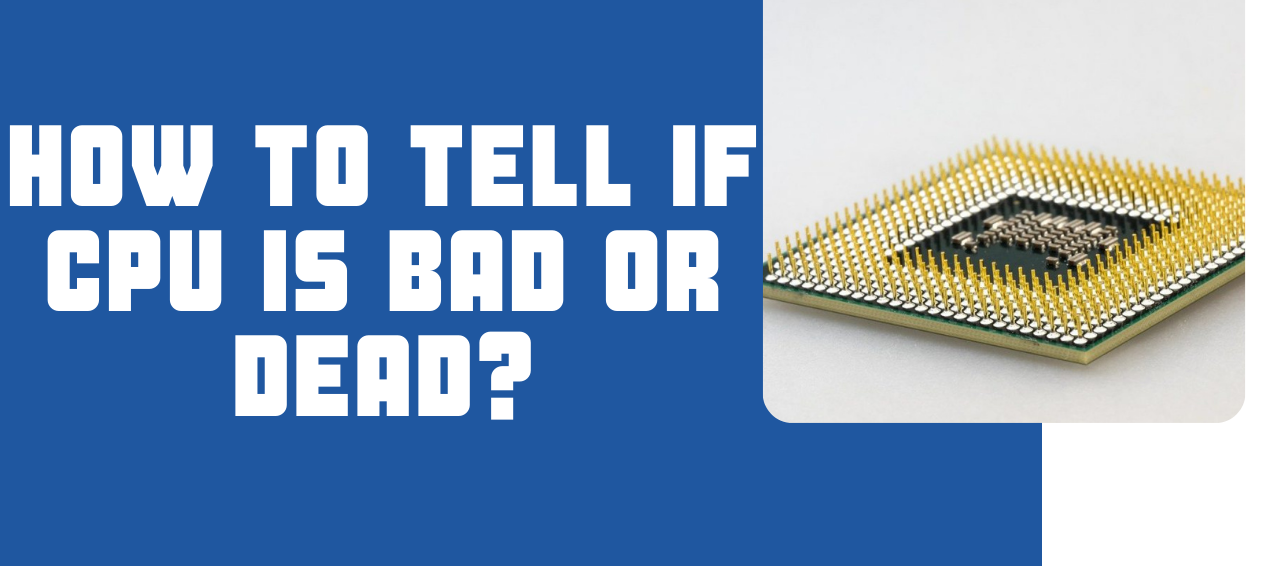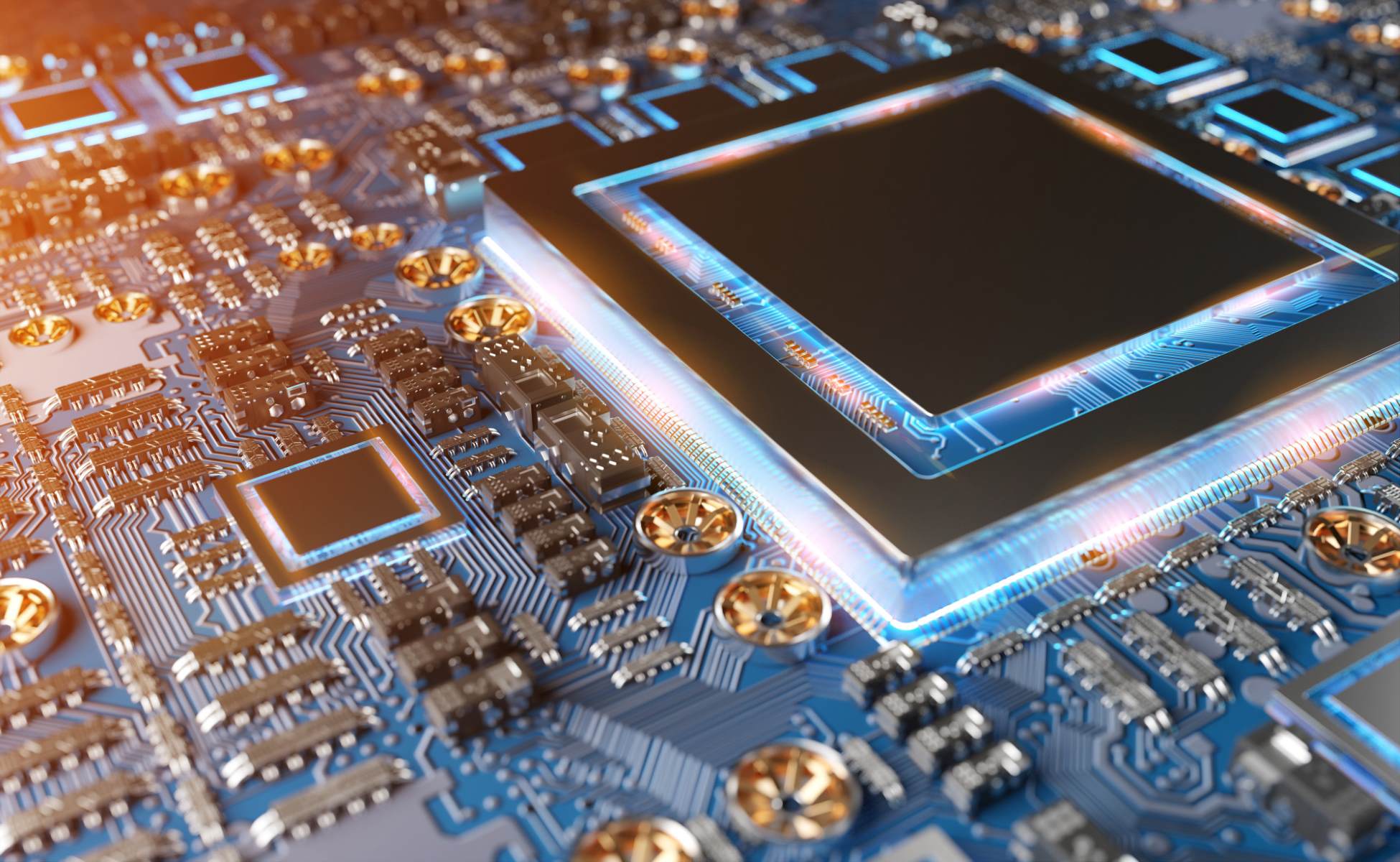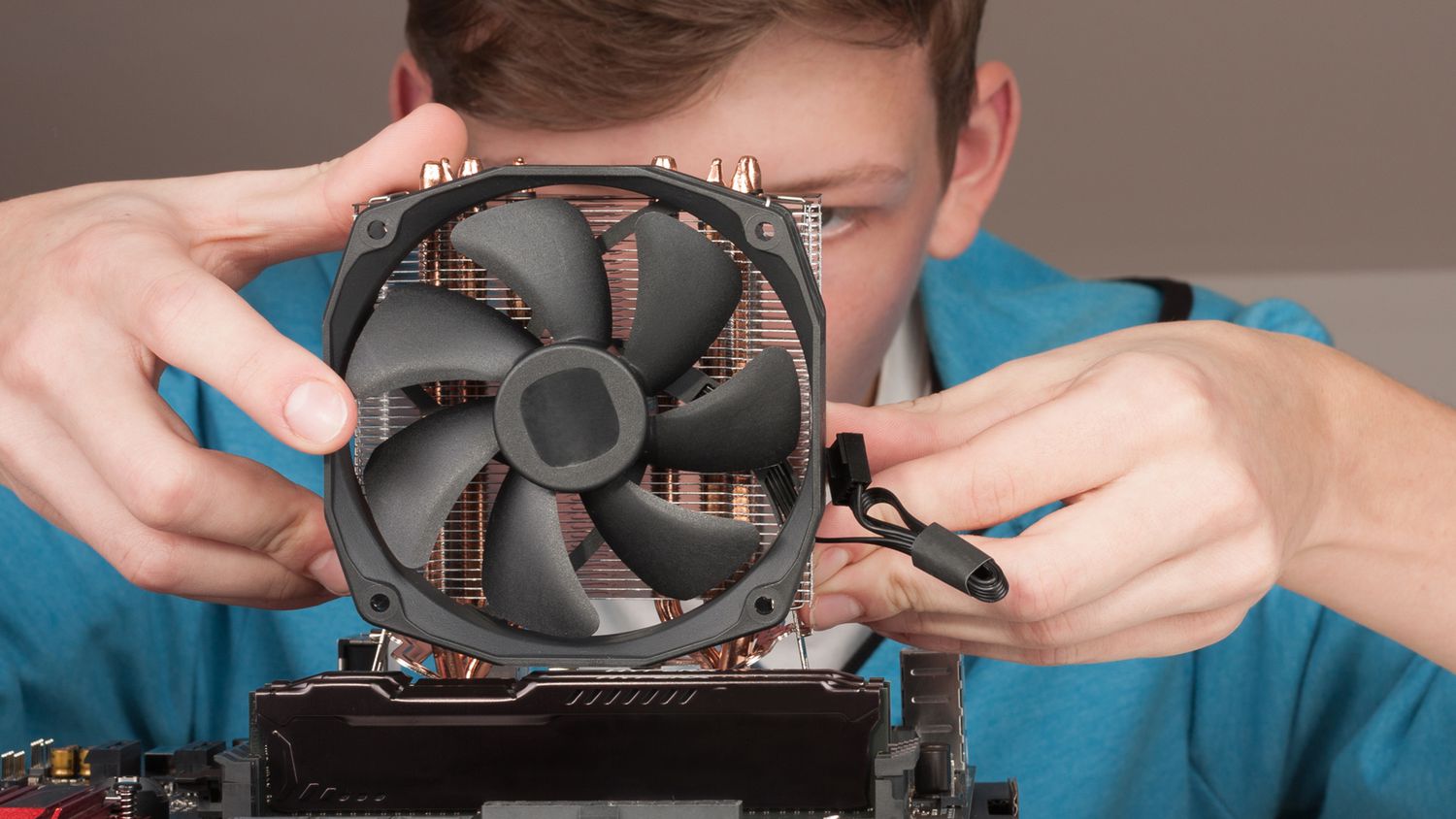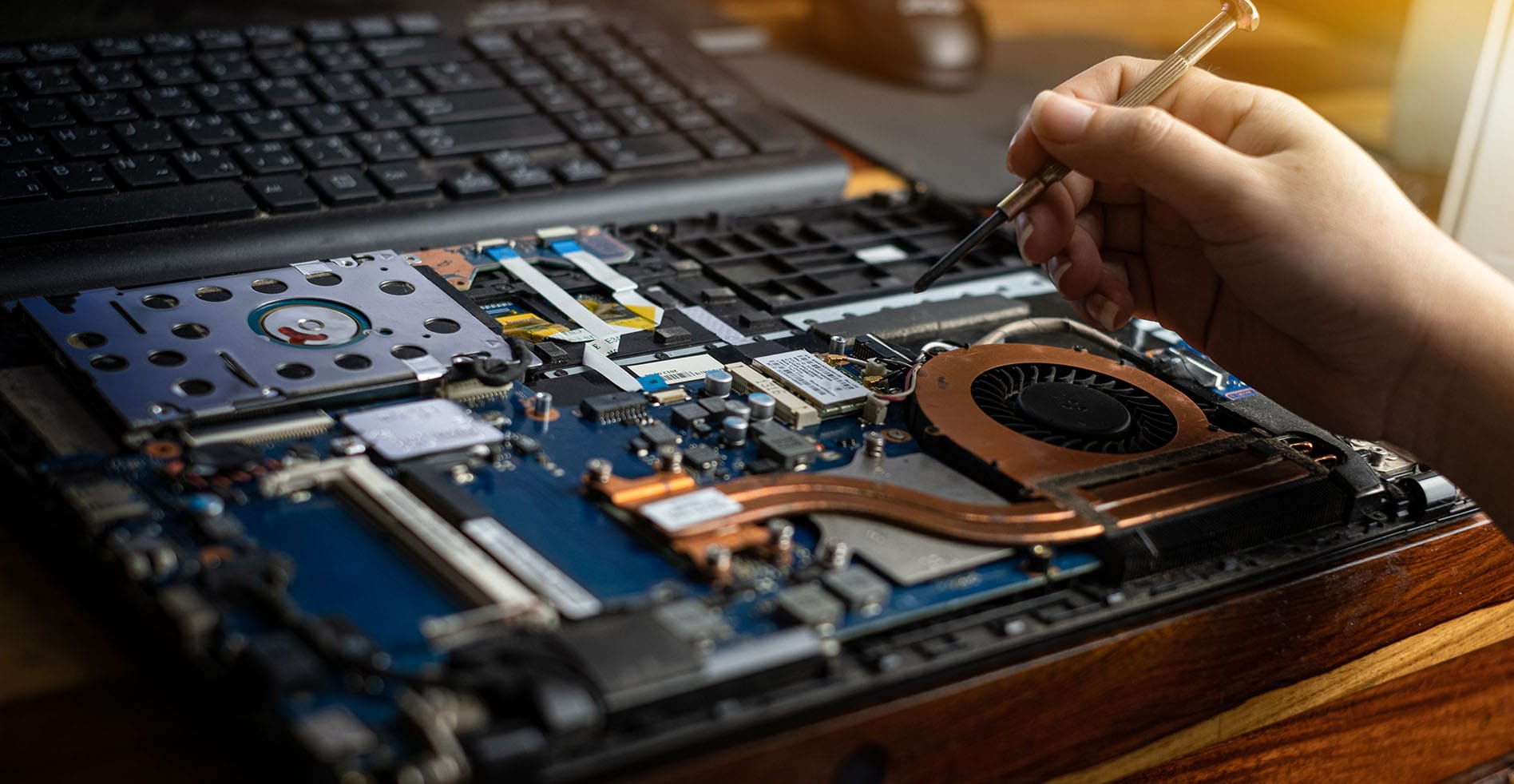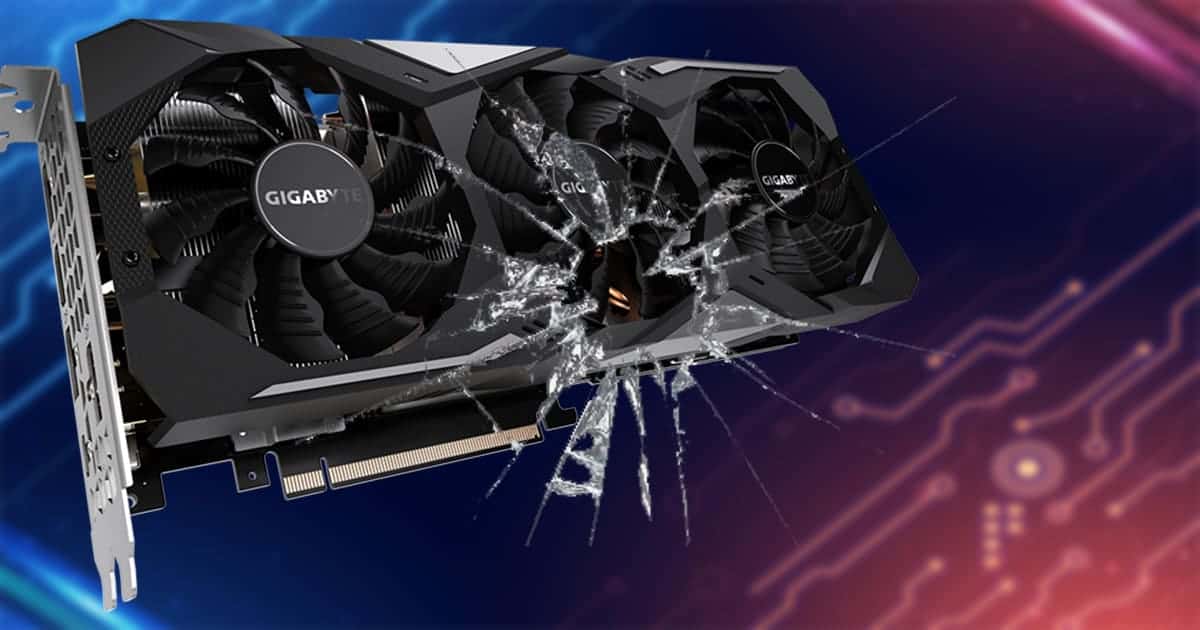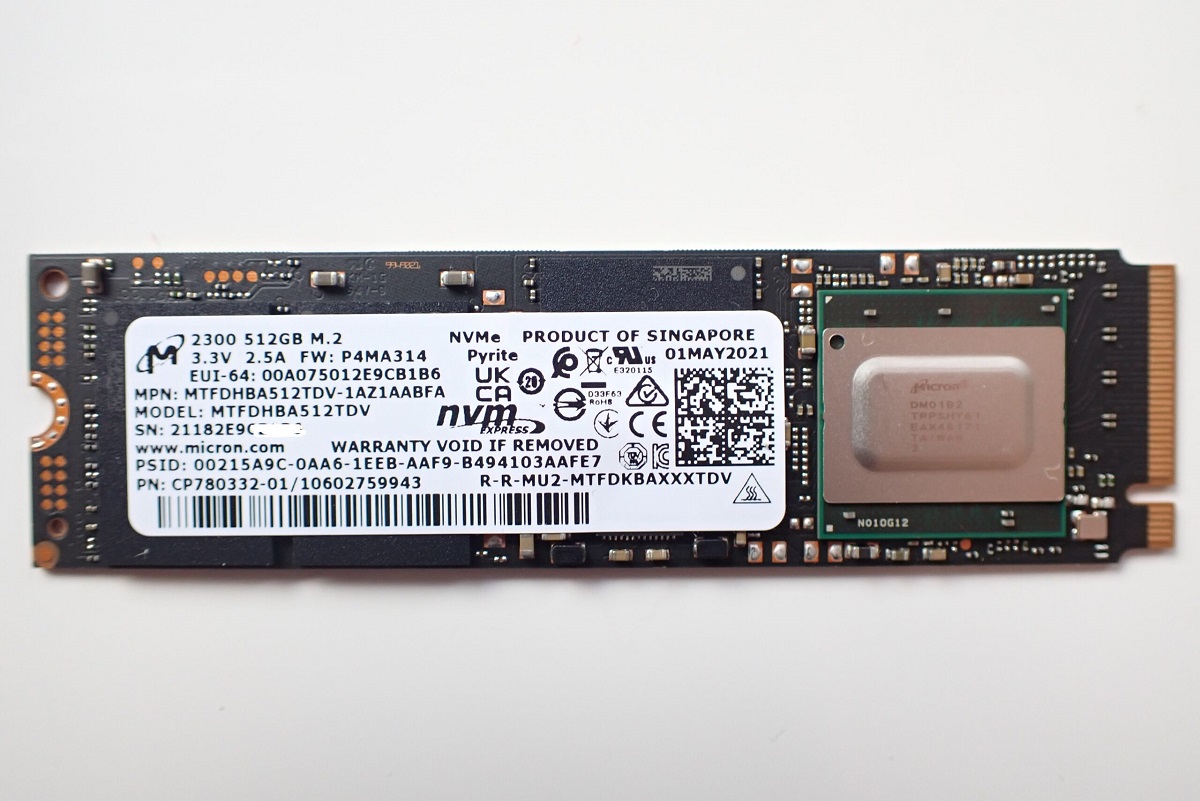Symptoms of a Bad CPU
A CPU (Central Processing Unit) is the brains of a computer, responsible for executing instructions and performing calculations. Like any other hardware component, a CPU can develop issues over time that can impact its performance and functionality. It’s important to be aware of the signs that indicate a bad CPU, so you can take appropriate action to address the problem. Here are some common symptoms to watch out for:
- Performance Issues and Slowdowns: One of the most noticeable signs of a bad CPU is a decrease in performance. You might experience slow system boot times, delays in opening and running programs, and overall sluggishness. Tasks that used to be smooth and quick may now take longer to complete.
- Overheating and System Crashes: A faulty CPU can lead to overheating issues, causing the computer to shut down unexpectedly or freeze frequently. Excessive heat can damage the CPU and other components, so it’s crucial to address any overheating problems promptly.
- Error Messages and Blue Screens of Death (BSOD): If your CPU is failing, you may encounter frequent error messages, system crashes, and the dreaded Blue Screen of Death. BSODs usually indicate critical hardware or software issues, including problems with the CPU.
- CPU Utilization and System Monitoring Tools: Monitoring the CPU utilization and performance can help identify issues. High CPU usage even when you’re not running resource-intensive tasks can be a sign of a bad CPU. Tools like Task Manager (Windows) or Activity Monitor (Mac) can provide insights into CPU performance.
These symptoms, individually or in combination, are often indicative of a problematic CPU. However, it’s important to note that these signs can also be caused by other hardware or software issues. To accurately diagnose a bad CPU, it’s recommended to perform additional testing and troubleshooting.
Performance Issues and Slowdowns
When your computer experiences performance issues and slowdowns, it can be frustrating and hinder your productivity. These issues can be attributed to various factors, including a bad CPU. Understanding the signs and symptoms of a bad CPU can help you identify and address the problem. Here are some key indicators to watch out for:
- Slow System Boot Times: If your computer takes an unusually long time to boot up, this could be a sign of a bad CPU. During the boot process, the CPU is responsible for initializing hardware and launching the operating system. If the CPU is struggling or malfunctioning, it can result in a longer boot time.
- Delays in Opening and Running Programs: A bad CPU can significantly impact the speed at which programs open and run on your computer. You may notice a delay in launching applications or a noticeable slowdown in their performance. This can make even simple tasks feel sluggish and unresponsive.
- General Sluggishness: Overall system sluggishness is another sign of a bad CPU. You may experience delays when switching between applications, navigating menus, or performing tasks that require CPU-intensive processing, such as image or video editing. The computer may feel unresponsive and take longer to execute commands.
- Decreased Overall Performance: If your computer’s overall performance has gradually declined, it could be due to a failing CPU. You may find that tasks that used to be smooth and quick now take significantly longer to complete. This decreased performance can have a significant impact on your day-to-day computing experience.
If you notice any of these performance issues and slowdowns on your computer, it’s important to investigate further to determine the root cause. While a bad CPU can be one possibility, it’s also worth considering other hardware components, software conflicts, or system resource limitations. Diagnosing the problem accurately will help you implement the appropriate solution to restore your computer’s performance.
Overheating and System Crashes
Overheating and system crashes are common issues that can be caused by a variety of factors, one of which is a malfunctioning CPU. Understanding the signs and symptoms associated with overheating and system crashes can help you identify if your CPU is the culprit. Here are some indicators to look out for:
- Frequent System Shutdowns: If your computer shuts down unexpectedly and frequently, it could be a sign of an overheating CPU. As the CPU performs calculations and executes instructions, it generates heat. If the CPU cooling system is not functioning correctly or if there is excessive dust build-up, the CPU can overheat, triggering an automatic shutdown to prevent damage.
- Freezing and Unresponsiveness: An overheating CPU can cause your computer to freeze or become unresponsive during operation. You may notice delays or lag when performing tasks, and the system may become temporarily unresponsive. This can make it difficult to work efficiently and may require a restart to regain functionality.
- Unusual Fan Noises: If you hear abnormally loud or grinding noises coming from your computer’s fans, it could indicate a cooling system malfunction. The CPU fan helps dissipate heat generated by the CPU, ensuring it operates within safe temperature limits. A failing fan can lead to inadequate cooling, causing the CPU to overheat and resulting in system crashes.
- Hot Surface Temperatures: Touching the surface of your computer and finding it excessively hot can be an indication of CPU overheating. The CPU is typically located beneath the computer’s case, and if it’s not effectively cooled, it can reach high temperatures. This heat can be transferred to the case, making it hot to the touch.
If you experience any of these signs of overheating and system crashes, it’s crucial to address the issue promptly to prevent potential damage to your CPU or other components. Cleaning accumulated dust from the cooling system, ensuring proper airflow, and replacing malfunctioning fans are some steps you can take to mitigate overheating issues. Additionally, using monitoring software to track CPU temperatures can help you identify abnormal spikes or sustained high temperatures that may indicate a failing CPU.
Error Messages and Blue Screens of Death (BSOD)
Error messages and the infamous Blue Screen of Death (BSOD) are often associated with software or hardware issues, and a bad CPU can be one of the potential culprits. Understanding how error messages and BSODs relate to CPU problems can help you identify if your CPU is experiencing issues. Here are some key indicators to consider:
- Frequent Error Messages: If you encounter frequent error messages on your computer, such as application crashes, system errors, or runtime errors, it could point to a problematic CPU. A failing CPU can cause data corruption, memory issues, or other errors that manifest through these error messages.
- Blue Screens of Death (BSODs): The Blue Screen of Death is a critical system error displayed on a blue screen that forces your computer to restart. A faulty CPU can trigger BSODs, often accompanied by error codes or error descriptions. These error screens indicate severe system issues that require attention, including potential CPU problems.
- Random System Crashes: If your computer frequently crashes without any warning or apparent reason, it could be a result of a bad CPU. When the CPU fails, it can cause system instability and trigger these sudden crashes, disrupting your workflow and potentially causing data loss if not addressed promptly.
- Interrupted or Inconsistent Functionality: A failing CPU can cause inconsistent or interrupted functionality on your computer. You may experience difficulties in executing certain tasks, encountering random freezes or application hangs that require you to force-close programs. These issues can be indications of a CPU struggling to handle the workload.
If you come across these error messages or encounter the dreaded Blue Screen of Death, it’s essential to take appropriate actions. While a bad CPU can be a potential cause, other hardware or software factors can contribute to these issues as well. Troubleshooting steps such as updating drivers, running system diagnostics, or performing hardware tests can help identify the root cause of the problem and determine if the CPU is in need of attention.
CPU Utilization and System Monitoring Tools
Monitoring the CPU utilization and performance of your computer can provide valuable insights into its health and help you identify potential issues, including a bad CPU. By using system monitoring tools, you can track the CPU’s usage, temperature, and other relevant metrics. Here’s how CPU utilization and system monitoring tools can help you diagnose CPU problems:
- High CPU Usage: One of the key indicators of a bad CPU is consistently high CPU usage, even when you’re not running resource-intensive tasks. Monitoring tools like Task Manager (Windows) or Activity Monitor (Mac) allow you to view real-time CPU utilization and identify any abnormal spikes or sustained high usage, indicating a possible CPU problem.
- Abnormal CPU Temperature: Monitoring the CPU temperature is crucial to ensure it operates within safe limits. Excessive heat can cause the CPU to throttle performance or even lead to system instability. System monitoring tools often provide information on CPU temperatures, allowing you to detect if the CPU is running too hot and diagnose possible cooling issues.
- Real-time Performance Metrics: Using system monitoring tools, you can access various performance metrics related to CPU usage, such as average utilization, clock speed, and core activity. Analyzing these metrics over time can help you identify patterns or anomalies that may indicate a failing CPU.
- Resource-Intensive Programs: System monitoring tools can also give you insights into which specific programs or processes are consuming the most CPU resources. If you notice certain programs consistently placing a heavy load on the CPU, it could be an indication of poorly optimized software or compatibility issues with the CPU.
Regularly monitoring CPU utilization and other performance metrics not only helps you diagnose CPU problems but also allows you to optimize your computer’s performance. By identifying and addressing any abnormal CPU behavior promptly, you can prevent further issues and ensure your system runs smoothly.
Steps to Diagnose a Bad CPU
If you suspect that your CPU is malfunctioning or experiencing issues, it’s essential to diagnose the problem accurately before taking any corrective measures. Here are some steps you can take to diagnose a bad CPU:
- Testing the CPU with Benchmarking Software: One way to assess the performance and stability of your CPU is by using benchmarking software. These programs stress the CPU by running intensive tests, such as calculations and simulations, to measure its capabilities. If the CPU fails these tests or produces abnormally low scores, it could be a sign of a bad CPU.
- Checking CPU Temperatures and Usage: Monitoring the CPU temperatures and usage can provide valuable insights into its health. Use system monitoring tools to monitor CPU temperatures and ensure they are within safe limits. Additionally, check for excessive CPU usage, especially during idle or low-demand periods, as it can indicate a potential problem.
- Checking for Physical Damage or Dust Buildup: Inspect the physical condition of the CPU and its cooling components. Look for any signs of physical damage, such as bent pins or burn marks. Additionally, check for excessive dust accumulation on the CPU heatsink and fan, which can hinder proper cooling and lead to overheating issues.
- Replacing the CPU or Seeking Professional Help: If all other diagnostic steps suggest a faulty CPU, you may need to consider replacing it. This involves purchasing a compatible CPU and following the installation process, which can vary depending on your computer’s hardware. If you’re not comfortable performing the replacement yourself, it’s best to seek professional help from a computer technician.
It’s important to note that these diagnostic steps should be performed alongside other troubleshooting measures to rule out other potential causes of the issues you are experiencing. Factors such as faulty RAM, software conflicts, or power supply problems can also manifest similar symptoms as a bad CPU. If you’re unsure about the diagnosis or require additional assistance, consulting with a professional can help ensure an accurate assessment and appropriate course of action.
Testing the CPU with Benchmarking Software
Testing your CPU with benchmarking software is an effective way to evaluate its performance, capabilities, and stability. These software programs stress the CPU by running a series of intensive tests and calculations, providing insights into its overall functionality. Here’s how you can use benchmarking software to test your CPU:
- Choose a Reliable Benchmarking Software: There are several reputable benchmarking tools available, such as Geekbench, Cinebench, or PassMark PerformanceTest. Do some research to find a software program that suits your needs and has a good reputation for accurately assessing CPU performance.
- Close Unnecessary Applications: Before running the benchmarking software, close any unnecessary programs and processes running in the background. This will ensure that the CPU is primarily focused on the benchmarking tests, providing more accurate results.
- Run the Benchmark Tests: Follow the instructions provided by the benchmarking software and initiate the tests. These tests typically evaluate the CPU’s performance in various areas, such as single-core and multi-core processing, floating-point calculations, and memory performance. The software will generate a score or ranking based on the CPU’s performance in these tests.
- Compare Results: Once the benchmark tests are complete, compare your CPU’s scores or rankings with similar systems or the average scores for your specific CPU model. This will give you an idea of how your CPU performs compared to others and whether it falls within the expected range.
- Identify Abnormally Low Scores: If your CPU’s benchmark scores are significantly lower than expected or similar systems, it could indicate a potential problem with the CPU. Abnormally low scores may suggest issues like processing inefficiency, underperforming cores, or hardware malfunctions.
- Consider Additional Tests: If your CPU’s benchmark scores raise concerns, it’s advisable to perform additional tests or consult with experts to further diagnose the problem. These tests may involve stress testing the CPU, analyzing temperature behavior under heavy load, or investigating potential software conflicts that could affect benchmark performance.
By testing your CPU with benchmarking software, you can get a better understanding of its performance capabilities and identify any potential issues. Remember to consider the overall context, including other symptoms and factors, to accurately assess whether your CPU is functioning properly or if further investigation is necessary.
Checking CPU Temperatures and Usage
Monitoring the temperatures and usage of your CPU is essential to ensure it is operating within safe limits and performing optimally. Abnormal temperatures or excessive CPU usage can indicate potential problems with the CPU or its cooling system. Here’s how you can check CPU temperatures and usage:
- Use System Monitoring Tools: Various system monitoring tools are available that provide real-time information about CPU temperatures and usage. Task Manager (Windows) and Activity Monitor (Mac) are built-in tools that display CPU utilization, allowing you to quickly assess how much of the CPU’s processing power is being utilized by different programs and processes.
- Monitor Idle and Load Temperatures: Use temperature monitoring software to track CPU temperatures both at idle and under load. During idle times, the CPU should operate at lower temperatures, while under load, it may generate more heat. If temperatures are consistently high or exceed the recommended thresholds, it may indicate cooling issues or inadequate airflow within the system.
- Refer to Manufacturer Guidelines: Check the CPU manufacturer’s guidelines to determine the recommended temperature range for your specific CPU model. Manufacturers typically provide maximum temperature specifications to ensure safe operation without risk of damage or thermal throttling. If your CPU consistently exceeds these recommended limits, it may indicate a problem with cooling or ventilation.
- Investigate Abnormally High CPU Usage: High CPU usage, particularly when the system is idle or running light tasks, can be a sign of underlying issues. Identify which processes or programs are consuming significant CPU resources using monitoring tools. If unnecessary or unknown programs are causing high CPU usage, it could indicate malware infections or software conflicts that require attention.
- Determine CPU Performance: While monitoring CPU temperatures and usage, analyze their correlation with the overall performance of your system. If the CPU temperatures are high and usage is consistently at or near maximum, it may result in performance bottlenecks or system slowdowns. This could suggest a problem with the CPU or other components, such as insufficient cooling or inadequate power supply.
- Address Cooling and Ventilation Issues: If you observe abnormally high CPU temperatures or consistent high CPU usage, take steps to address potential cooling and ventilation issues. Ensure that the CPU heatsink and fan are clean and free of dust, adequate thermal paste is applied between the CPU and heatsink, and the computer’s case has proper airflow with functioning fans and proper cable management.
Regularly checking CPU temperatures and usage can help you identify potential issues and take the necessary steps to address them. By monitoring these aspects, you can ensure the CPU operates within safe limits, optimize system performance, and prevent potential damage or instability.
Checking for Physical Damage or Dust Buildup
Physical damage and dust buildup can adversely affect the performance and lifespan of your CPU. Regularly inspecting the CPU for any signs of damage or dust accumulation is important for maintaining its optimal functionality. Here’s how you can check for physical damage and dust buildup:
- Inspect the CPU for Physical Damage: Carefully examine the CPU for any visible signs of physical damage, such as bent pins or burn marks. Bent or broken pins can disrupt the connection between the CPU and the motherboard, leading to functionality issues. Burn marks may indicate overheating or electrical problems that require immediate attention.
- Check the CPU Cooling System: Take a close look at the CPU cooling system, including the heatsink and fan. Ensure that the heatsink is properly seated and that there are no loose or damaged components. Check the fan blades for any obstructions, such as dust or debris, that may restrict airflow or cause the fan to operate inefficiently.
- Clean Accumulated Dust: Dust can accumulate on the CPU and its surrounding components, potentially hindering proper cooling and leading to overheating issues. Use a can of compressed air or an anti-static brush to gently remove dust from the CPU and its surroundings. Make sure to discharge any static build-up before cleaning and avoid using excessive force that could damage delicate components.
- Inspect the Case Ventilation: Examine the computer’s case for proper ventilation and airflow. Ensure that all intake and exhaust vents are clear of dust and obstructions. Check the case fans for proper operation and clean them if necessary, as these fans contribute to cooling the CPU and other components.
- Replace Faulty Fans or Heatsinks: If you find that the CPU fan or heatsink is damaged or not functioning properly, it’s recommended to replace them. Faulty cooling components can result in inadequate heat dissipation from the CPU, leading to increased temperatures and potential performance issues.
- Consider Regular Maintenance: To prevent dust buildup and potential damage, consider implementing a regular maintenance routine. This can involve cleaning the CPU and surrounding components periodically, such as every 3 to 6 months, or as needed based on the environment in which the computer operates.
Regularly checking for physical damage and dust buildup can help ensure the longevity and optimal performance of your CPU. By maintaining a clean and well-ventilated system, you reduce the risk of overheating and improve the overall stability and efficiency of your computer.
Replacing the CPU or Seeking Professional Help
If all other diagnostic steps indicate a faulty CPU, you may need to consider replacing it. The CPU is a crucial component of your computer, and if it is malfunctioning, it can result in performance issues and system instability. Here are some important considerations when replacing the CPU or seeking professional help:
- Compatible Replacement: When replacing the CPU, ensure that you select a compatible model that is supported by your motherboard. Check the socket type and other specifications to find a CPU that is compatible with your system. Consulting your motherboard’s manual or manufacturer’s website can provide the necessary information to make an informed decision.
- Installation Process: Replacing a CPU involves physically removing the existing CPU and installing the new one. The installation process can vary depending on your computer’s hardware. It’s important to follow the manufacturer’s instructions and take necessary precautions, such as wearing an anti-static wrist strap, to avoid damaging sensitive components.
- Professional Assistance: If you are unsure about performing the CPU replacement yourself, or if your computer is under warranty, it’s advisable to seek professional help. Computer technicians have the expertise and experience to safely replace the CPU and ensure proper installation. They can also provide additional diagnostics and maintenance services to address any other potential issues.
- Proper Disposal of Old CPU: When replacing the CPU, it’s important to dispose of the old CPU properly. CPUs contain hazardous materials, such as lead, which can harm the environment if not disposed of correctly. Check your local regulations for e-waste disposal and recycling options in your area.
- Additional Problem Diagnosis: If you are uncertain whether the CPU is the sole cause of the issues you are experiencing, it is recommended to seek professional help. A computer technician can perform a thorough diagnosis of your system, including testing other components, to identify any additional problems that may be contributing to the symptoms you are observing.
Replacing a CPU can be a complex task, and if done incorrectly, it can cause further damage to your computer. If you are not confident in your abilities, seeking professional assistance is the best course of action. Professional technicians can ensure a smooth CPU replacement process and provide expert advice to resolve any underlying issues affecting your computer’s performance.







